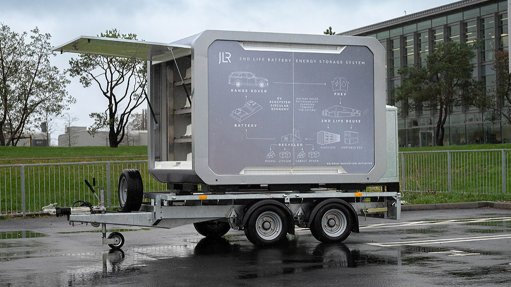
JLR's Bess system
Jaguar Land Rover (JLR) has developed a portable battery energy storage system (Bess) using second-life Range Rover and Range Rover Sport plug-in hybrid electric vehicle (PHEV) batteries.
The unit, built in collaboration with energy storage startup Allye Energy, is the first Bess to be commercially available with JLR battery packs.
Each Bess uses seven second-life batteries, and can store 270 kWh of energy, which is nearly a month’s worth of power for the average UK home.
The battery packs are removed from the vehicles and slotted into customised racks, without any additional processing.
The Bess is designed to be charged by plugging it into any CCS-capable vehicle charger.
In addition, multi-input connectivity via powerlock connections enables the Bess to be connected to renewable power at fixed or offgrid sites.
JLR’s engineering team will be the first to use the Bess, which is capable of fully recharging up to nine Range Rover PHEV vehicles at once, to provide zero emissions charging during testing for the new Range Rover Electric, which is launching later this year.
The Bess is set to power more than 1 000 hours of testing, saving more than 15 494 kg of carbon dioxide during the course of a year, compared with running a diesel generator.
The British car maker says the initiative demonstrates its adoption of circular economy principles, by generating new value for EV batteries by reusing them for energy storage before they are recycled.
The Bess weighs less than 3.5 t, allowing it to be portable, as well as stationary.
The unit will also be commercially available for use outside of JLR.
Battery value chains are predicted to grow 30% a year from 2022 to 2030, to reach a value of more than $400-billion.
Second-life battery supply for stationary applications is predicted to exceed 200 GWh/y by 2030, creating a global value of more than $30-billion.
JLR says its batteries can be deployed safely in low-energy situations once their health falls below electric vehicle requirements, which typically leaves between 70% and 80% residual capacity.
Following these second-life use cases, JLR will recycle the batteries so that the raw materials can be recovered for reuse.